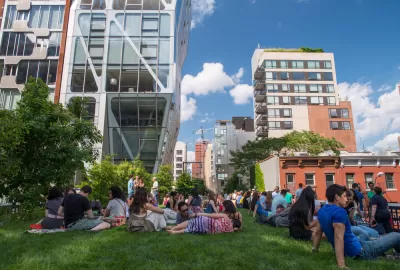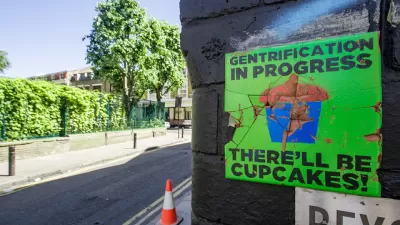A long and ranging article in the New Yorker surveys non-fiction, art, and other manifestations of intellectualism for insight into the plight of the city—to always be cast in some manner of morality tale.

"Cities can't win," declares Adam Gopnik to commence a New Yorker piece on the oscillating poles of the urban crisis in the United States. "When they do well, people resent them as citadels of inequality; when they do badly, they are cesspools of hopelessness."
"The reason that perceptions of cities switch so radically is twofold. Cities are the contradictions of capitalism, spelled out in crowds. They are engines of prosperity and inequality in equal measure, and when the inequality tips poor they look unsavable; when it tips rich, they look unjust. And then cities enfold a subtler contradiction—they shine by bringing like-minded people in from the hinterland (gays, geeks, Jews, artists, bohemians), but they thrive by asking unlike-minded people to live together in the enveloping metropolis."
To explore the paradox, Gopnik surveys a few recent books that can help readers get a fix on the messy and contradictory history of American opinions about cities. First, Gopnik discusses a forthcoming book called, City On a Grid, by Gerard Koeppel, to establish an organizing principle for this discussion of cities. Also, Evan Friss’s forthcoming The Cycling City: Bicycles & Urban America in the 1890s, "wants, in turn, to show us a forgotten parenthesis when the city had not yet yielded to the car. But he ends up showing mainly how terrific research and a feeling for detail can be undermined by the pieties of the contemporary social sciences." With regard to the perpetual offense offered by cities, Friss, " insists that bikes were defeated not by cars but by a growing fear of the potentially radical effects, particularly on women, of the popular bicycle. The decline in cycling had to do with 'its loss of social and cultural appeal.'" Later, Gopnik also delves into the frightening results produced when examining the ruins of Detroit, exemplified by the new book Once in a Great City, written by David Maraniss.
To ask the question of how much physical characteristics affect the character of cities, Gopnik claims that the "greatest celebrations of the grid are the émigré Piet Mondrian’s two New York paintings: 'Broadway Boogie Woogie' and 'Victory Boogie Woogie.' They are part of a forties-New York efflorescence, the blinking, stable, dynamic, and yet still rectilinear energy—an image of energy that breaks with the usual organic forms of ecstatic spirals and gyres. They show the grid as metaphor, and a metaphor, after all, is a cell with a view: the bars in the window bend, and you leave as, and when, you want to."
There's lots more on each of these examples, and a lot more examples, in the article.
FULL STORY: Naked Cities: The death and life of urban America

Pennsylvania Mall Conversion Bill Passes House
If passed, the bill would promote the adaptive reuse of defunct commercial buildings.

Planning for Accessibility: Proximity is More Important than Mobility
Accessibility-based planning minimizes the distance that people must travel to reach desired services and activities. Measured this way, increased density can provide more total benefits than increased speeds.

World's Largest Wildlife Overpass In the Works in Los Angeles County
Caltrans will soon close half of the 101 Freeway in order to continue construction of the Wallis Annenberg Wildlife Crossing near Agoura Hills in Los Angeles County.

Eviction Looms for Low-Income Tenants as Rent Debt Rises
Nonprofit housing operators across the country face almost $10 billion in rent debt.

Brightline West Breaks Ground
The high-speed rail line will link Las Vegas and the Los Angeles area.

Colorado Bans No-Fault Evictions
In most cases, landlords must provide a just cause for evicting tenants.
City of Costa Mesa
Licking County
Barrett Planning Group LLC
HUD's Office of Policy Development and Research
Mpact Transit + Community
HUD's Office of Policy Development and Research
Tufts University, Department of Urban and Environmental Policy & Planning
City of Universal City TX
ULI Northwest Arkansas
Urban Design for Planners 1: Software Tools
This six-course series explores essential urban design concepts using open source software and equips planners with the tools they need to participate fully in the urban design process.
Planning for Universal Design
Learn the tools for implementing Universal Design in planning regulations.


























